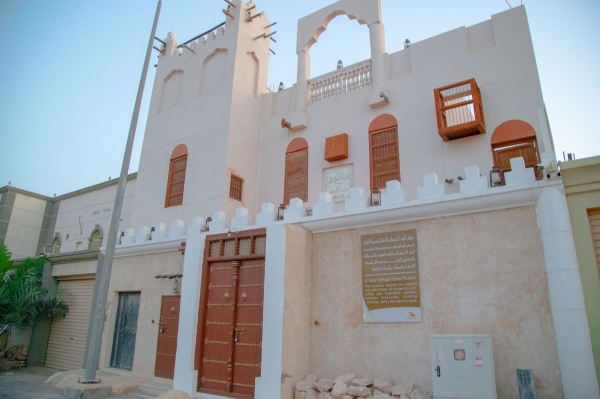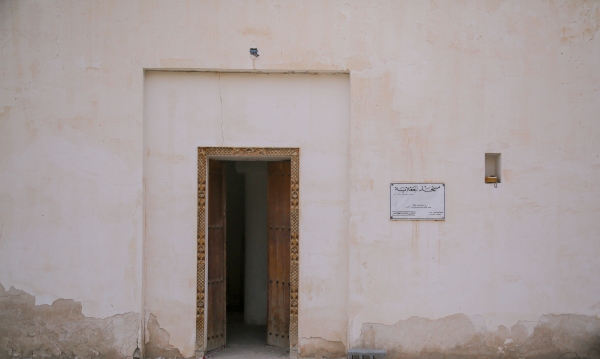

The Studded Door is one of the oldest types of doors in the Kingdom of Saudi Arabia and is considered a piece of local architectural art. It is known for adorning the facades of some old buildings and is characterized by large, domed nails visible on its exterior. Its use became widespread due to its durability, strength, and sturdy corner joints. Some types of these doors are made using palm tree trunks.
Details of the studded door
The details of the studded door include several innovative solutions that arose due to the condition of local wood. Most trees grew at an angle, lacking straightness, making it rare to extract straight pieces suitable for their intended purpose. Additionally, there was a scarcity of wide wooden pieces suitable for making doors and windows according to the local environmental requirements. The studded door became a suitable solution for carpenters, whose craft required an understanding of both aesthetic and functional aspects when designing doors. These details are evident in the studded door; it relies on joining wooden planks side by side, without considering the uniformity of the wood types in the making of doors, boxes, and windows. Carpenters in the past combined available wood from tamarisk and Ziziphus spina-christi trees. Any gaps or issues resulting from this process were filled by placing additional pieces called (Farakh) that matched the size of the gaps.
Parts of the studded door
The studded door comprises several parts, including two panels, one fixed on the stationary side and the other often located on the left near the door edge, whose primary function is to secure the panel. Craftsmen refer to the long wooden slats of the door as "Darrab," and the wooden pieces that form the door's ribs from the back and pass through the nails are called "Dawarib" or "Shalamin." The number of Dawarib can be determined by observing the nails that adorn the door's front, typically ranging from five to eight parallel rows depending on the door's strength and size. Carpenters use tamarisk wood for this purpose, adding "Thurayya," an additional strengthening and decorative feature consisting of two extra nails at the end of each row, which is relied upon when the door is rotated.
Related quizzes


